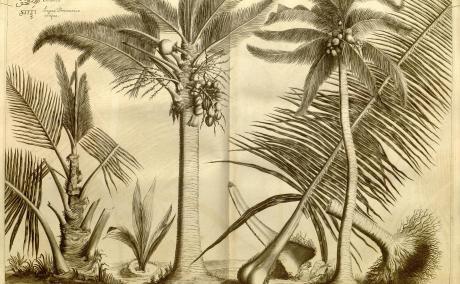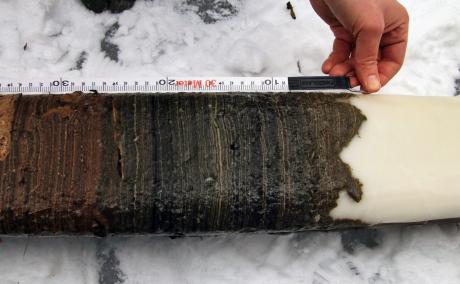637 Search Results
IV. Anthropocene Formations
Previous Members & Affiliated Scholars:
The umbrella project aims at a comprehensive understanding of the long-term historical dynamics that have given shape to the current anthropogenic alt
Planetary_Urbanization
Planetary urbanization at the beginning of the twenty-first century: This map juxtaposes a demarcation of the world’s agglomerations zones (red z
Mastering the Soil and Measuring Flow in Early Modern Istanbul
Drawing on court records, repair registers, as well as archaeological and visual evidence, this project examines the nature of the premodern occupatio
Scientists, Politics, and Climate Change in China
Tackling climate change is growing in urgency and complexity. People around the globe are scrambling to mitigate and adapt to a warming planet. The Pe
Snapshot of the record-breaking heat wave of summer 2022.png
Scientists at Chinese universities, research institutes, and other organizations are addressing a wide range of climate change related questions, from
Meteorologist giving climate advice to tomato growers in Inner Mongolia.jpg
The working group Scientists, Politics, and Climate Change in China (SPCCC) brings together academics interested in understanding the evolution of cli
Historicizing China’s Climate Change Science
China’s scientific research related to climate change has a long history, evolving primarily from atmospheric science and meteorological research deve
Qin Dahe.png
DronePicture_ErikBaark.png
Etienne Benson interviewed on an episode of the omega tau science and engineering podcast
Go to PodcastEtienne Benson in einer Folge des omega tau science and engineering Podcasts
Zum PodcastHortus Indicus Malabaricus: The Eurasian Life of a Seventeenth-Century “European” Botanical Classic
 No 82
In the 1650s, the Dutch East India Company (VOC) developed a series of initiatives to better learn the truths of Asian nature. Their extensive information network—merchants, ships’ captains, sailors, surgeons—found and shipped the natural objects from Asia that dazzled Europe, reporting back on the new worlds they encountered.
No 82
In the 1650s, the Dutch East India Company (VOC) developed a series of initiatives to better learn the truths of Asian nature. Their extensive information network—merchants, ships’ captains, sailors, surgeons—found and shipped the natural objects from Asia that dazzled Europe, reporting back on the new worlds they encountered.
Hortus Indicus Malabaricus: Der eurasische Lebensweg eines „europäischen“ Klassikers der Botanik aus dem 17. Jahrhundert
 No 82
In den 1650er Jahren entwickelte die Niederländische Ostindien-Kompanie (VOC) eine Reihe von Initiativen, um die Natur in Asien besser zu erforschen. Das nötige Know-how lieferte ihr weitreichendes Netzwerk aus Handelsreisenden, Kapitänen, Seeleuten und Medizinern. Diese transportierten die in Europa begehrten asiatischen Naturobjekte in ihre Heimat, wo sie von ihren Begegnungen mit den neuen Welten berichteten.
No 82
In den 1650er Jahren entwickelte die Niederländische Ostindien-Kompanie (VOC) eine Reihe von Initiativen, um die Natur in Asien besser zu erforschen. Das nötige Know-how lieferte ihr weitreichendes Netzwerk aus Handelsreisenden, Kapitänen, Seeleuten und Medizinern. Diese transportierten die in Europa begehrten asiatischen Naturobjekte in ihre Heimat, wo sie von ihren Begegnungen mit den neuen Welten berichteten.
The Anthropocene’s Signal: What the Geology of the Present Beckons for the Future of Research
 No 81
Which fingerprints of global human activities appear in the geological archive? And how do geologists investigate such an earthly present? This reciprocal pair of questions has been the point of departure for a pioneering transdisciplinary collaboration that, over the last few years, has tightly interwoven the very different research backgrounds and daily routines of the Anthropocene Working Group (AWG), the Haus der Kulturen der Welt (HKW), and the MPIWG’s research cluster “Anthropocene Formations.” The connection of these three unusual partners has existed since 2012, creating completely new knowledge practices and discursive spaces of research and the public in their combination of diverse expertise. In July 2023 the AWG, in a joint press conference with the MPIWG, will announce its final recommendation for the formal geological reference point for the onset of the Anthropocene. The completion of this effectively “epoch-making” research work coincides with the end of the HKW’s ten-year long focus on the Anthropocene and the establishment of the Max Planck Institute of Geoanthropology (MPIGEA), now firmly anchoring Anthropocene research within the Max Planck Society. We would like to use this conclusion of a decade-long phase of institutional reorientation toward Anthropocene perspectives to take a look back at the research on the geological signals of the Anthropocene, and ahead to what these themselves signal for the future of engaged research.
No 81
Which fingerprints of global human activities appear in the geological archive? And how do geologists investigate such an earthly present? This reciprocal pair of questions has been the point of departure for a pioneering transdisciplinary collaboration that, over the last few years, has tightly interwoven the very different research backgrounds and daily routines of the Anthropocene Working Group (AWG), the Haus der Kulturen der Welt (HKW), and the MPIWG’s research cluster “Anthropocene Formations.” The connection of these three unusual partners has existed since 2012, creating completely new knowledge practices and discursive spaces of research and the public in their combination of diverse expertise. In July 2023 the AWG, in a joint press conference with the MPIWG, will announce its final recommendation for the formal geological reference point for the onset of the Anthropocene. The completion of this effectively “epoch-making” research work coincides with the end of the HKW’s ten-year long focus on the Anthropocene and the establishment of the Max Planck Institute of Geoanthropology (MPIGEA), now firmly anchoring Anthropocene research within the Max Planck Society. We would like to use this conclusion of a decade-long phase of institutional reorientation toward Anthropocene perspectives to take a look back at the research on the geological signals of the Anthropocene, and ahead to what these themselves signal for the future of engaged research.
Das Anthropozän-Signal: Was die Geologie der Gegenwart für die Zukunft der Forschung bedeutet
 No 81
Welche Fingerabdrücke des globalen menschlichen Handelns finden sich im geologischen Archiv? Und wie erforschen Geolog*innen eine solche irdische Gegenwart? Derlei Fragen bildeten den Ausgangspunkt für eine wegweisende transdisziplinäre Zusammenarbeit, die in den letzten Jahren die höchst unterschiedlichen Forschungs- und Arbeitsroutinen der Anthropocene Working Group (AWG), dem Haus der Kulturen der Welt (HKW) und dem MPIWG-Forschungscluster Anthropocene Formations eng miteinander verwoben hat. Bereits seit 2012 bestand die Verbindung dieser drei höchst ungewöhnlichen Partner, die in ihrer Kombination aus verschiedenartigen Expertisen völlig neue Forschungspraktiken und diskursive Räume von Wissenschaft und Öffentlichkeit schuf. Im Juli 2023 gibt die AWG auf einer gemeinsamen Pressekonferenz mit dem MPIWG ihre endgültige Empfehlung für den offiziellen geologischen Referenzpunkt für den Beginn des Anthropozäns bekannt. Mit dem Abschluss dieser gewissermaßen „epochalen” Forschungsarbeit, dem Ende des zehnjährigen Anthropozän-Schwerpunkts am HKW und der Gründung des Max-Planck-Instituts für Geoanthropologie (MPIGEA), welches die Anthropozän-Forschung fest in der Max-Planck-Gesellschaft verankert, lohnt ein kleiner Rückblick auf die stratigraphischen Untersuchungen des anthropozänen Signals und ein Ausblick darauf, was eben dieses für die Zukunft einer engagierten Wissenschaft selbst wiederum signalisiert.
No 81
Welche Fingerabdrücke des globalen menschlichen Handelns finden sich im geologischen Archiv? Und wie erforschen Geolog*innen eine solche irdische Gegenwart? Derlei Fragen bildeten den Ausgangspunkt für eine wegweisende transdisziplinäre Zusammenarbeit, die in den letzten Jahren die höchst unterschiedlichen Forschungs- und Arbeitsroutinen der Anthropocene Working Group (AWG), dem Haus der Kulturen der Welt (HKW) und dem MPIWG-Forschungscluster Anthropocene Formations eng miteinander verwoben hat. Bereits seit 2012 bestand die Verbindung dieser drei höchst ungewöhnlichen Partner, die in ihrer Kombination aus verschiedenartigen Expertisen völlig neue Forschungspraktiken und diskursive Räume von Wissenschaft und Öffentlichkeit schuf. Im Juli 2023 gibt die AWG auf einer gemeinsamen Pressekonferenz mit dem MPIWG ihre endgültige Empfehlung für den offiziellen geologischen Referenzpunkt für den Beginn des Anthropozäns bekannt. Mit dem Abschluss dieser gewissermaßen „epochalen” Forschungsarbeit, dem Ende des zehnjährigen Anthropozän-Schwerpunkts am HKW und der Gründung des Max-Planck-Instituts für Geoanthropologie (MPIGEA), welches die Anthropozän-Forschung fest in der Max-Planck-Gesellschaft verankert, lohnt ein kleiner Rückblick auf die stratigraphischen Untersuchungen des anthropozänen Signals und ein Ausblick darauf, was eben dieses für die Zukunft einer engagierten Wissenschaft selbst wiederum signalisiert.
